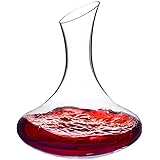Exploring the World’s Major Wine Regions: A Journey Through Terroir and Tradition
Globally, an estimated 241 million hectoliters of wine are produced annually, reflecting a rich tapestry of history, culture, and craftsmanship that stretches across continents. The video above provides an excellent introductory overview of some of the most significant major wine regions of the world, setting the stage for a deeper dive into what makes each unique. As we embark on this expanded journey, our focus will be placed upon the distinctive characteristics, flagship grape varietals, and winemaking philosophies that define these celebrated landscapes.
The exploration of global wine regions is not merely about identifying locations; it is an understanding of how climate, soil, and human intervention intertwine to shape the liquid in your glass. This intricate relationship, often referred to as ‘terroir,’ is a cornerstone of wine appreciation, and it is observed distinctly across the Old World and New World viticultural areas.
Europe: The Historic Heart of Global Wine Regions
Europe is widely recognized as the birthplace of modern viticulture, with winemaking traditions that span millennia. It is here that the vast majority of the world’s prominent grape varietals, primarily from the Vitis Vinifera family, were first cultivated and perfected. These regions are distinguished by their deep historical roots, often emphasizing tradition and the expression of specific local terroirs over grape varietal alone.
France: Setting the Gold Standard
As highlighted in the video, France continues to be the undisputed leader in global wine production by volume and prestige. Its influence on winemaking worldwide is profound, with many other wine-producing regions striving to emulate its established classifications and styles.
- Bordeaux: This region in southwestern France is universally considered an industry standard for classic red blends. Wines here are typically a blend of Cabernet Sauvignon, Merlot, and Cabernet Franc, often with smaller amounts of Petit Verdot and Malbec. The left bank is dominated by Cabernet Sauvignon, yielding powerful, age-worthy wines, while the right bank, with its clay-rich soils, is known for Merlot-dominant, softer, more approachable styles. White Bordeaux wines, usually a blend of Sauvignon Blanc and Sémillon, are also produced.
- Burgundy: To the east, Burgundy is where Pinot Noir and Chardonnay reach their pinnacle. Winemaking here is characterized by its meticulous focus on single varietal expressions from tiny, precisely defined vineyards, showcasing the nuanced impact of ‘climat’ – the region’s unique micro-terroirs.
- Champagne: Northeast of Paris, the chalky soils and cool climate of Champagne are ideal for producing the world-renowned sparkling wine bearing its name. Predominantly crafted from Chardonnay, Pinot Noir, and Pinot Meunier, the intricate production methods result in wines of exceptional finesse and complexity.
Spain: Diversity in Every Bottle
Spain’s extensive vineyard area is reflective of its rich winemaking heritage. The country is a significant producer, offering a wide array of styles, from robust reds to crisp whites and sparkling Cavas.
- Rioja: This is Spain’s most famous wine-producing region, primarily known for its red wines made from the Tempranillo grape. Garnacha (Grenache), Mazuelo (Carignan), and Graciano are also often blended in. Rioja wines are classified by the amount of time they are aged in oak and bottle, leading to ‘Crianza,’ ‘Reserva,’ and ‘Gran Reserva’ designations.
- Ribera del Duero: Located further inland, this region is another powerhouse for Tempranillo, locally known as Tinto Fino. The high-altitude vineyards and extreme diurnal temperature shifts contribute to wines of intense color, structure, and aromatic complexity.
- Cava: While not a specific region, Cava is a style of Spanish sparkling wine primarily produced in Catalonia. It is made using the traditional method, similar to Champagne, and typically features Macabeu, Parellada, and Xarel·lo grapes.
Italy: A Tapestry of Terroirs
Italy’s diverse geography and indigenous grape varietals make it a truly fascinating major wine region. With over 2,000 distinct grape varieties, winemaking is deeply integrated into local culture.
- Tuscany: Famous for its rolling hills and iconic cypress trees, Tuscany is the home of Chianti. This quintessential Italian red wine is made predominantly from the Sangiovese grape. Beyond Chianti, wines like Brunello di Montalcino and Vino Nobile di Montepulciano, also crafted from Sangiovese, are internationally acclaimed for their elegance and longevity.
- Piedmont: In the northwest, Piedmont is home to Nebbiolo, the noble grape responsible for the powerful and aromatic Barolo and Barbaresco wines. These wines are known for their firm tannins, high acidity, and notes of tar, roses, and cherry, requiring significant aging to reveal their full potential.
- Veneto: This northeastern region is a hub for both quantity and quality. It is the leading producer of Prosecco, a popular sparkling wine made primarily from the Glera grape. The Valpolicella region within Veneto also produces Amarone, a rich, full-bodied red wine made from partially dried grapes, offering unique depth and concentration.
Germany: Reinventing Riesling
Germany, while not the largest producer, contributes uniquely to the major wine regions of the world, particularly with its white wines. For years, German wines were predominantly known for their sweet, approachable styles, but a strong movement towards dry wines has redefined its image.
The Riesling grape is undoubtedly the star here, thriving in the cool climates and slate soils of regions like the Mosel, Rheingau, and Pfalz. German Rieslings are celebrated for their vibrant acidity, aromatic complexity, and ability to age gracefully, showcasing a spectrum from bone-dry to lusciously sweet. While red wines, particularly Pinot Noir (Spatburgunder), are produced, it is the versatility and purity of Riesling that truly sets Germany apart on the global stage.
New World Wine Regions: Innovation Across Continents
In contrast to Europe’s tradition-bound approach, New World wine-producing regions are often characterized by a greater emphasis on fruit-forward styles, varietal labeling, and the adoption of modern winemaking techniques. These regions, though younger in their winemaking history, have rapidly gained international acclaim.
United States: A Continent of Vineyards
The United States stands as one of the “big four” in terms of wine production volume, as noted in the video. With wine being produced in an impressive 48 of the 50 states, the diversity of American wine is vast, but two major areas dominate the landscape.
- California: The Golden State is the powerhouse of American wine, responsible for over 80% of U.S. production. Iconic regions like Napa Valley and Sonoma County are globally renowned for their Cabernet Sauvignon and Chardonnay, often presenting rich, ripe, and powerful expressions of these varietals. Other important grapes include Zinfandel, Pinot Noir, and Merlot, thriving across various microclimates from the cooler Sonoma Coast to the warmer Central Valley.
- Pacific Northwest (Washington & Oregon): These states share a climate that offers distinct advantages for specific grape varietals. Oregon’s Willamette Valley is celebrated for its elegant and complex Pinot Noir, often compared to Burgundy. Washington State, particularly its Columbia Valley, boasts a continental climate ideal for producing excellent Cabernet Sauvignon, Merlot, Syrah, and Riesling, characterized by pronounced fruit and balanced acidity.
South America: Malbec’s Domain and Beyond
South America has emerged as a vibrant player in the global wine regions, primarily led by Chile and Argentina. These nations benefit from diverse altitudes and proximity to the Andes, providing unique growing conditions.
- Argentina: Globally, Argentina is synonymous with Malbec. The high-altitude vineyards of Mendoza, nestled at the foot of the Andes, produce Malbec wines of exceptional concentration, dark fruit flavors, and velvety tannins. These extreme conditions, with intense sunlight and cool nights, contribute to the grape’s signature characteristics.
- Chile: Situated between the Andes and the Pacific Ocean, Chile’s unique geography creates a natural barrier against pests, allowing for generally healthier vines. Cabernet Sauvignon thrives here, producing wines with freshness and structure. Chile is also known for its Carmenere, a grape once mistaken for Merlot, offering distinctive notes of red pepper and dark fruit.
Australia: Shiraz, Sun, and Sophistication
Australia is a dominant force in the major wine regions of the Southern Hemisphere, known for its powerful, fruit-driven wines that are enjoyed worldwide.
Shiraz (Syrah) is Australia’s signature grape, with regions like the Barossa Valley producing some of the world’s most iconic, full-bodied, and spicy examples. Beyond Shiraz, Australian winemakers excel with Chardonnay, Cabernet Sauvignon, and Grenache, adapting their styles to a wide range of climates, from the warm, expansive inland regions to the cooler, maritime-influenced zones of South Australia and Victoria. The vastness of the continent allows for remarkable stylistic diversity.
New Zealand: Crisp Sauvignon Blanc and Elegant Pinot Noir
This island nation, though small, has carved out a significant niche in the major wine regions of the world. Its cool, maritime climate, particularly in the Marlborough region, has made it a global benchmark for Sauvignon Blanc.
New Zealand Sauvignon Blanc is instantly recognizable for its vibrant acidity and intense aromatic profile, often featuring notes of passionfruit, gooseberry, and herbaceous undertones. In addition to this standout white, the cooler regions of Central Otago are gaining a stellar reputation for elegant and complex Pinot Noir, characterized by bright cherry fruit, earthy notes, and fine tannins.
South Africa: Heritage and Distinctive Varietals
South Africa represents a unique blend of Old World heritage and New World innovation, producing wines of increasing quality and distinction. Its winemaking history stretches back centuries, influenced by its diverse topography and distinct microclimates.
A truly unique varietal from this region is Pinotage, a hybrid grape developed in South Africa (a cross between Pinot Noir and Cinsaut). It yields deep-colored, full-bodied red wines that often exhibit smoky, earthy notes alongside dark fruit. Beyond Pinotage, South African wine regions are also celebrated for their Chenin Blanc (locally known as Steen), which can range from crisp and dry to rich and sweet, and well-structured Cabernet Sauvignon. The dramatic landscapes of the Western Cape provide ideal conditions for these diverse expressions.
The world of wine is immensely rich and varied, with each of these major wine regions of the world contributing its own unique character and story to the global palate. From the historic vineyards of France and Italy to the innovative estates of Australia and the Americas, an incredible journey awaits those eager to explore the diverse expressions of grape, land, and human ingenuity. As Plato wisely observed, “Nothing more excellent or valuable than wine was every granted by the gods to man,” an sentiment that resonates deeply as we appreciate the complexity and beauty found in every bottle from these celebrated regions.







